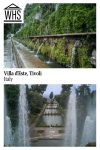Villa d’Este, Tivoli
By Samantha
What is Villa d’Este?
Villa d’Este in Tivoli, Italy, is a masterpiece of Italian garden design and architecture, blending seamlessly with the natural landscape. Thirty-three km (20 mi) outside of Rome, the expansive 16th-century villa is surrounded by the most meticulously designed Renaissance gardens that are said to have influenced European garden design significantly.
The villa was the palace of Cardinal Ippolito II d’Este of Ferrara, who was governor of Tivoli, and Pirro Ligorio designed the gardens. Both the villa and the gardens are open to the public.
Disclosure: This article contains affiliate links. Making a purchase through an affiliate link will mean a small commission for this website. This will not affect your price.
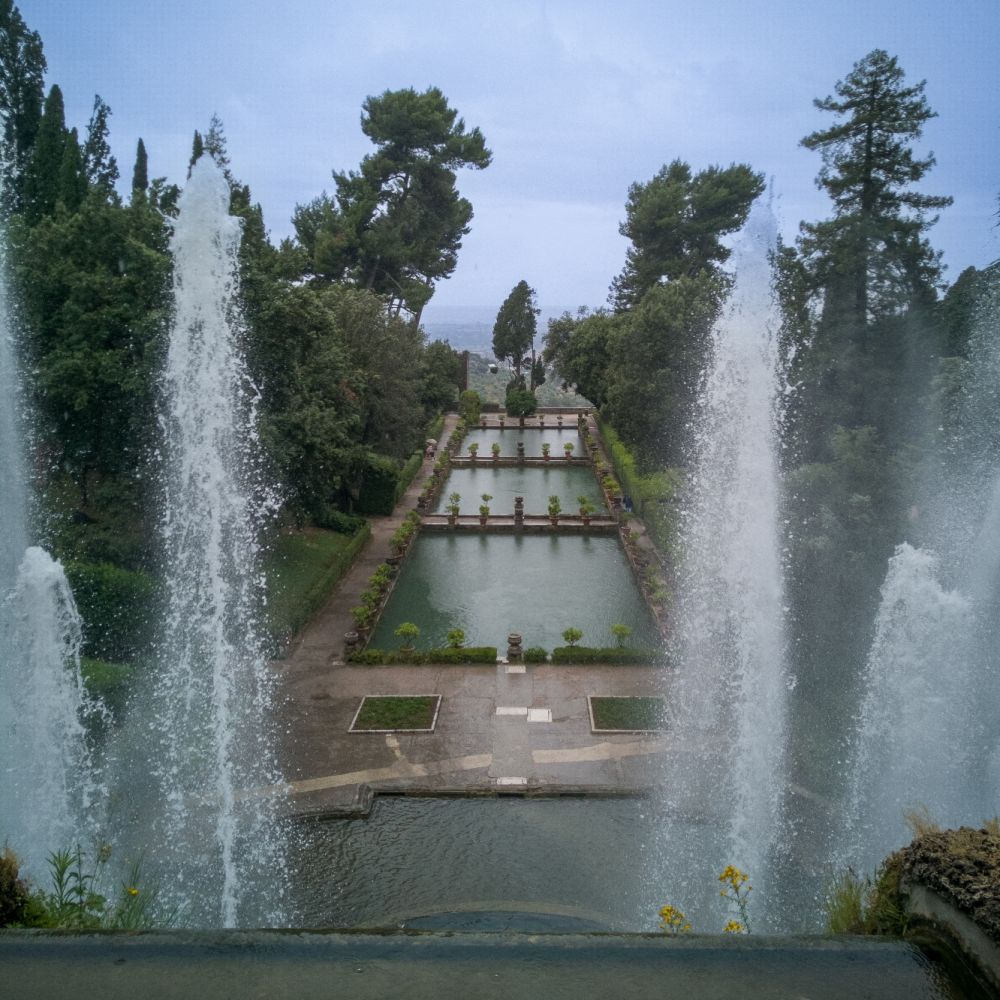
Why is Villa d’Este a UNESCO World Heritage site?
According to UNESCO, “The Villa d’Este in Tivoli is one of the most remarkable and comprehensive illustrations of Renaissance culture at its most refined.” The Villa d’Este is celebrated for its innovative design and the artistic and architectural creativity it represents. Its gardens are adorned with an impressive array of fountains, nymphs, grottoes, plays of water, and music, making it a unique example of an Italian 16th-century garden and a model that has inspired many others in garden design across Europe.
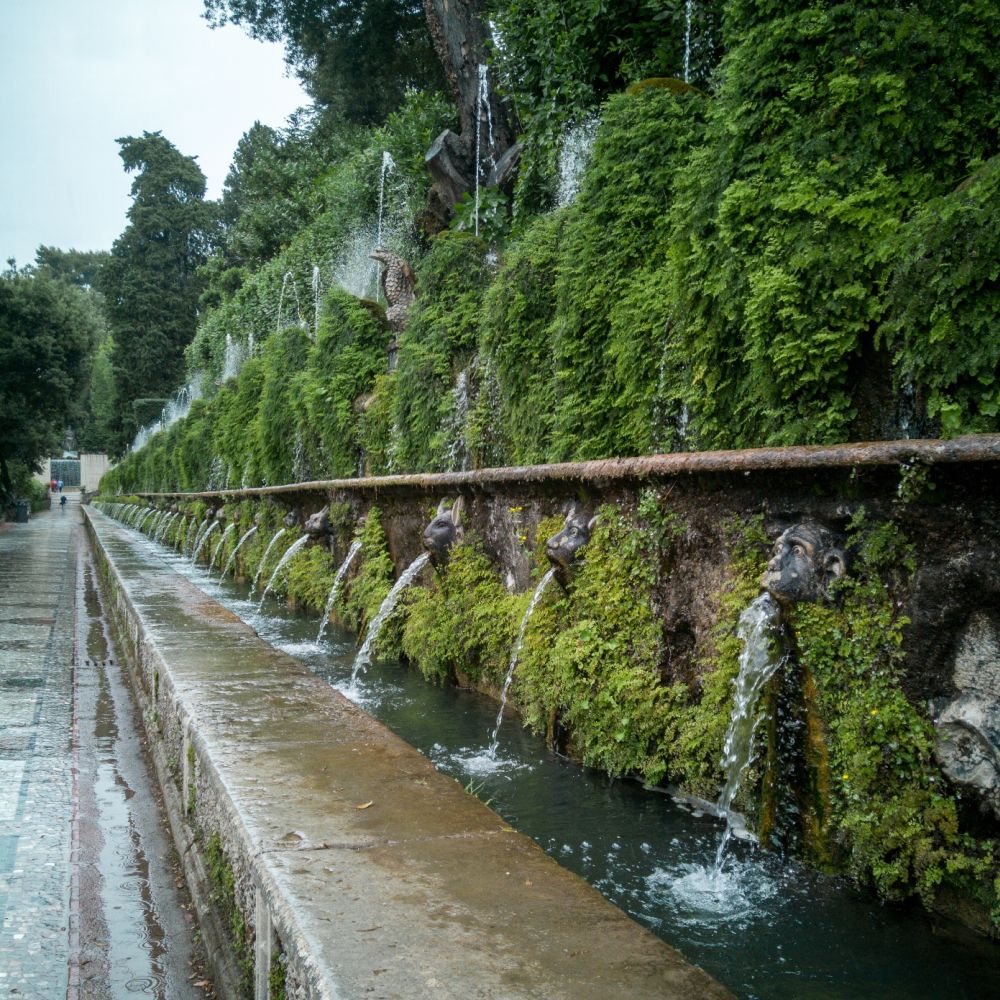
What can you expect on a visit to the villa and its gardens?
The Villa d’Este is not a popular site despite sitting only 40 minutes outside of Rome. Anyone who comes to Tivoli often favors visiting the ancient site of Hadrian’s Villa (Villa Adriana) just a few kilometers away. Unbeknown to them, it is very easy to visit both sites in one day. Subsequently, you won’t find huge crowds at the villa, which sets the perfect atmosphere for exploring the serene gardens.
The villa itself is a little underwhelming compared to the gardens. The villa has some beautiful frescoes and provides insight into the grandeur of Renaissance living. But the true gem of this UNESCO site is the tranquil yet awe-inspiring gardens. The Hundred Fountains, the Oval Fountain, and the Fountain of Neptune are particularly breathtaking. Walking through the gardens, you’ll find that each turn reveals a new vista or a beautifully designed water feature, showcasing the ingenuity of its creators.
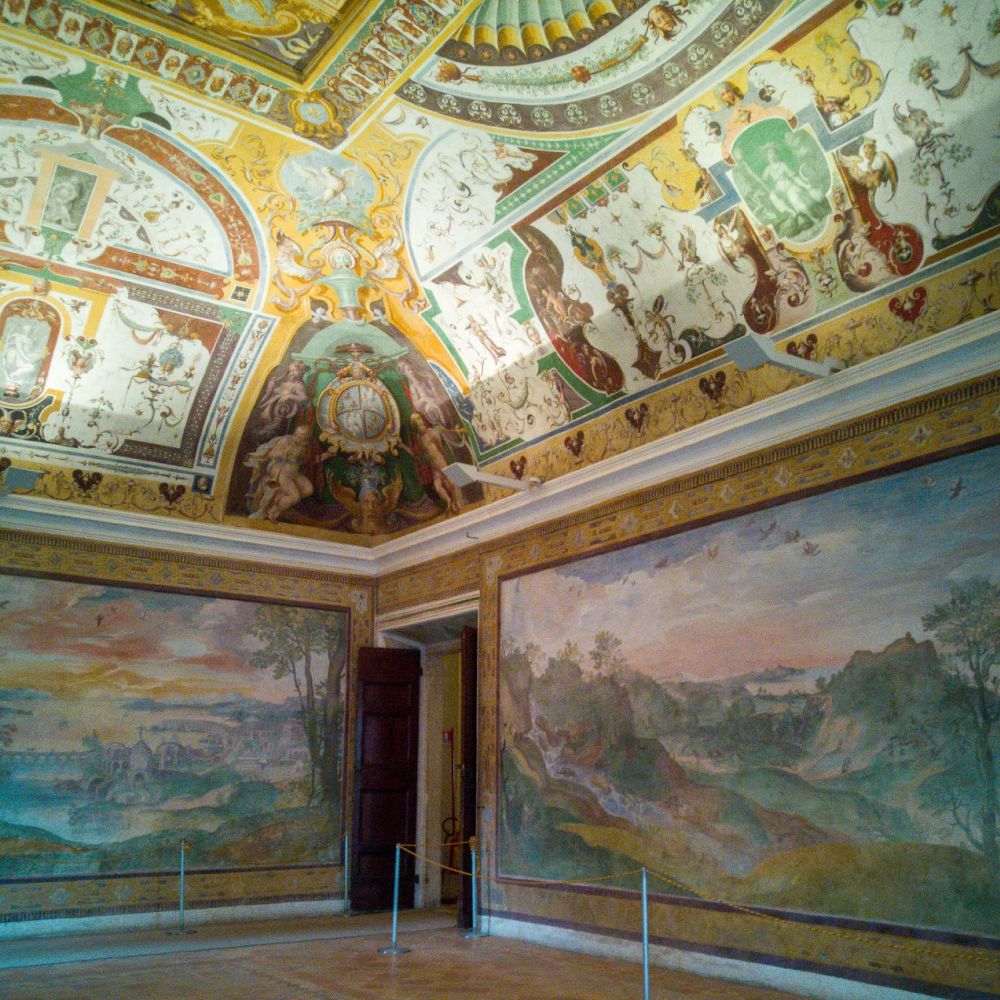
Is the Villa d’Este worth visiting?
Villa d’Este is undoubtedly worth a special trip, not just a stop if you’re in the area. Its historical significance, architectural beauty, and the sheer inventiveness of its gardens offer a unique glimpse into Renaissance culture and aesthetics. Visitors should allocate at least half a day to fully appreciate the villa and its gardens, though you could easily spend a full day exploring every corner and detail if it is of major interest to you.
What sorts of travelers would like the villa and its garden?
The site appeals to a wide range of travelers, especially those interested in history, architecture, and garden design. Art enthusiasts and photographers will find endless inspiration in its fountains and vistas, while those seeking a peaceful escape will enjoy the tranquil atmosphere of its expansive gardens.
There are plenty of places to stay in the pretty town of Tivoli: explore your options using the map below:
Tips for visiting Villa d’Este
Wear comfortable walking shoes as the gardens are extensive and involve a lot of walking, sometimes on uneven surfaces.
Visit early in the morning to avoid crowds and to see the gardens in the soft light. This also avoids the hottest part of the day, especially in the summer.
Villa d’Este combines well with a visit to the nearby ancient town of Tivoli itself or the UNESCO World Heritage site of Hadrian’s Villa, offering a full day of exploration steeped in history. Presumably you’d be visiting Rome on the same trip, so make sure to see the UNESCO-listed Vatican City and the Historic Center of Rome.
If you want to see both villas in a trip from Rome, sign up for this private full-day tour or this private half-day trip.
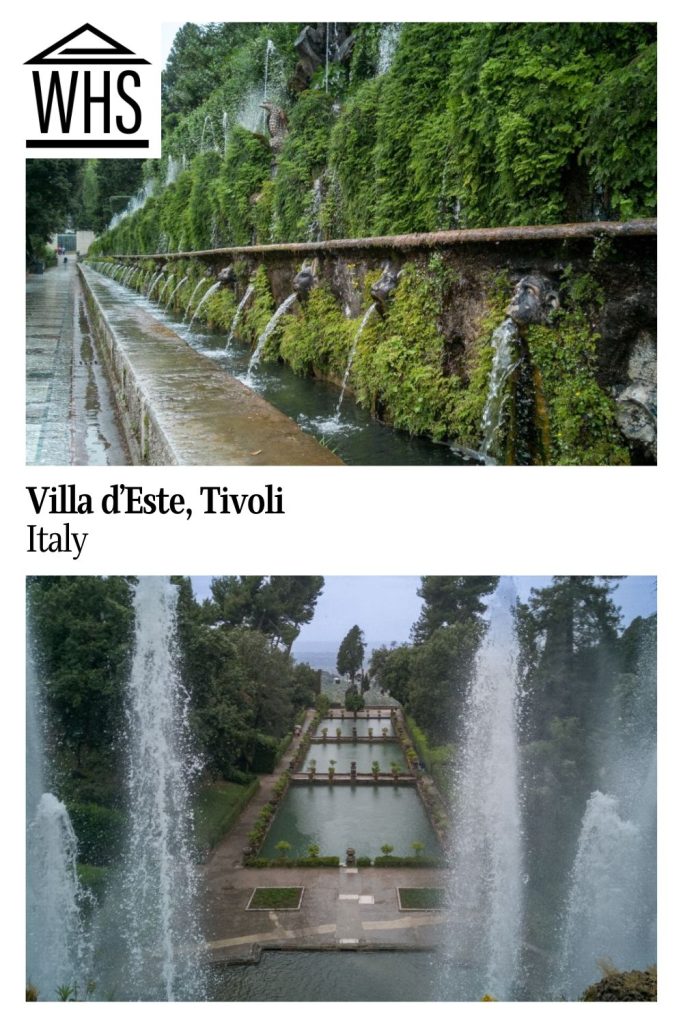
Where is Villa d’Este?
Its address is Piazza Trento, 1, 00019 Tivoli RM, Italy.
By car: Villa d’Este is about a 30-minute drive from Rome. Paid parking is available near the site. If you haven’t yet arranged your rental car, you can compare prices here.
By public transportation: From Rome, take the blue metro line B to Ponte Mammolo. From there, take the steps upstairs to its bus station and take the bus in the direction of Tivoli stop Piazzale Nazioni Unite. From there it is a short 5-minute walk. Alternatively, you can also take the train to Tivoli from Rome and take a taxi or walk from the train station.
For more information about Villa d’Este, its opening hours, and admission fees, see its official website.
Have you been to Villa d’Este? If so, do you have any additional information or advice about this UNESCO World Heritage site? Please add your comments below!

